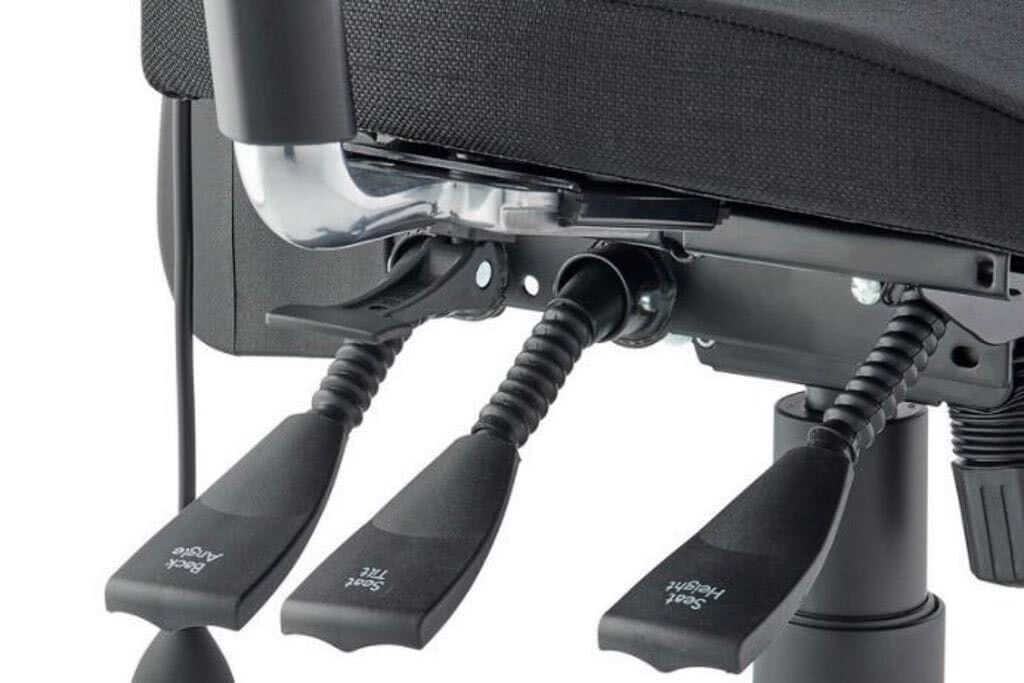Are Ergonomic Chairs Worth It?
In simple terms, yes, they are absolutely worth it! As we spend more and more time sitting, the importance of having an ergonomic chair that is right for your body shape and the role you undertake is becoming paramount in reducing workplace aches and pains and increasing wellbeing and productivity.
What does the term ‘Ergonomic’ mean?
The dictionary defines it as ‘an applied science concerned with designing and arranging things people use so that the people and things interact most efficiently and safely; also called biotechnology, human engineering or human factors.’
Beyond the dictionary definitions, ergonomic means that ergonomic chairs are chosen with the maximum amount of adjustability to enable the user, you, to maintain a comfortable and healthy sitting position during your working day.
What should I look for when buying ergonomic chairs?
This is a bit more difficult to answer in simple terms as the adjustment of a chair must take into account the overall workstation assessments or working environment (Display Screen Equipment Assessments information can be found here) and not just the chair itself plus the government have guidance on this as well at the Health and Safety Executive. That said, here are some key points to look for in an ergonomic office chair; these are not exhaustive but will certainly point you in the right direction.
- Size of Chair – Choosing a chair often starts with the basics but can be easily overlooked – for the average user this won’t be an issue, but if you’re particularly short or tall a standard sized chair could cause more issues than it solves. In any case a generously padded, and moulded seat pad will be the way to go making sure that the size of the chair fits roughly with your proportions. Adding on different adjustments once you’re in the right ballpark will give you the best overall experience.
- Seat Height – This is normally taken care of by a gas lift, allowing you to set yourself up at the right height relative to your desk to keep your shoulders at rest and reduce the risk of Repetitive Strain Injury.
- Back Rest – Some chairs have a moulded seat back to achieve this while others with an adjustable lumbar support so it can be positioned to match your body shape. Further still, higher quality mesh back chairs have ‘elasticated’ backs and mould to your back without the need for manual adjustment. In all cases the back rest should be ideally height adjustable, but at minimum have a height adjustable lumbar support.
- Seat Slide – Normally offered as an additional item on the more economical chairs but standard on higher price points. This allows the seat to slide forward and backwards to increase thigh support, stop the back of your legs being ‘crushed’ to maintain circulation, and allows the backrest to work at its best.
- Mechanism – This is a very large topic and will vary from the seat being static to automatically adjust the angle of the seat to suit the many sitting positions we take during the day. In essence, it’s all about keeping constant contact with the chair as you move so your whole body is always supported.
- Armrests – Armrests come in various types but fall into two main camps – fixed or adjustable. An adjustable armrest is the preferable choice as you can change the height to support your elbows to reduce strain on your shoulders while working. Other ergonomic benefits to look out for are being width adjustable, and even being able to fold out the way when they’re not needed.
- Swivel – Not often considered but important as we tend to work on multiple computer monitors nowadays; being able to turn your chair to face the screen you’re using, rather than twisting to reduce back strain.
Conclusion
Ergonomics is an important consideration when choosing office chairs, and all office furniture in fact, as everything you interact with must work together to reduce the stresses and strains of the working day.
If you need any further advice or guidance on ergonomic chairs, or you or a member of staff have any specific issues, then please contact us to arrange a call or no obligation visit so we can advise on the best solution for you.

